
Click the above Computer Enthusiast to follow us
Recently, the mobile phone industry has been buzzing with the Samsung Galaxy Fold, the first commercially available foldable smartphone. The Galaxy Fold’s power is unquestionable, featuring a 4.6-inch + 7.3-inch dual-screen, Snapdragon 855 mobile platform, and six cameras. Aside from its high price, it is indeed impressive.

In fact, one easily overlooked selling point of the Samsung Galaxy Fold is its global debut of the UFS3.0 flash memory chip.
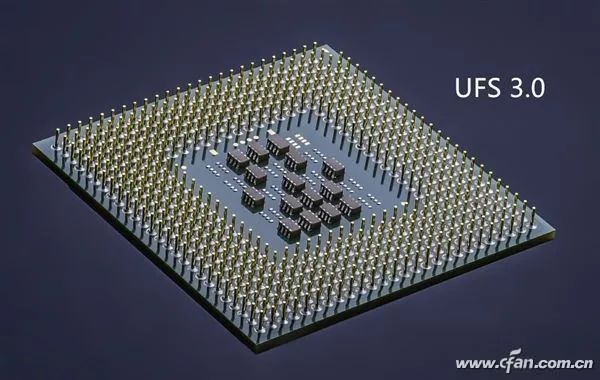
In the mobile phone field, although SoCs are becoming more powerful, memory and storage space are increasing, and cameras can even take pictures of the moon, storage performance has always been the biggest shortcoming in overall performance.
The flash memory currently popular in the mobile phone industry mainly includes eMMC5.1, UFS2.1 single-channel, and UFS2.1 dual-channel. We can compare their performance using AndroBench and Lu Master.
eMMC5.1 has the lowest performance, often paired with Snapdragon 4 series, 6 series, 7 series, Kirin 6 series, Kirin 7 series, and MediaTek Helio P series, mainly targeting the mainstream market under 2000 yuan. Its sustained read and write speeds in AndroBench are 281MB/s and 214MB/s, respectively.
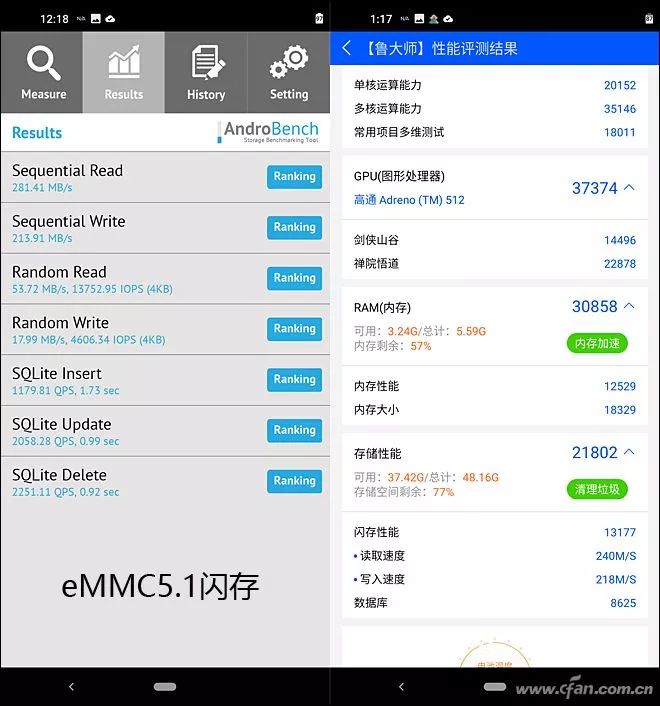
Performance of eMMC5.1 Flash Memory
The performance of UFS2.1 varies significantly depending on the number of channels. The single-channel UFS2.1 is mainly paired with Snapdragon 7 series, targeting the mid-to-high-end market, with sustained read and write speeds in AndroBench of 500MB/s and 201MB/s, respectively.

Performance of UFS2.1 Single-Channel Flash Memory
The dual-channel UFS2.1 is mainly paired with Snapdragon 8 series and Kirin 9 series, targeting the high-end market, with sustained read and write speeds in AndroBench of 822MB/s and 242MB/s, respectively.
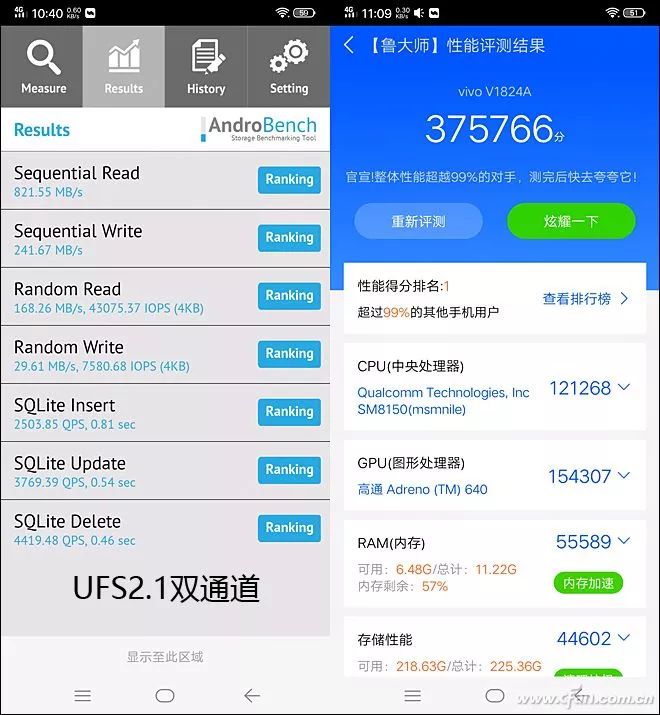
Performance of UFS2.1 Dual-Channel Flash Memory
As the top-level UFS3.0, which just began mass production in Q1 2019, it is the dream equipment for Snapdragon 855, with sustained read and write speeds in AndroBench reaching 1507MB/s and 396MB/s, respectively, an improvement of over 80% compared to dual-channel UFS2.1!
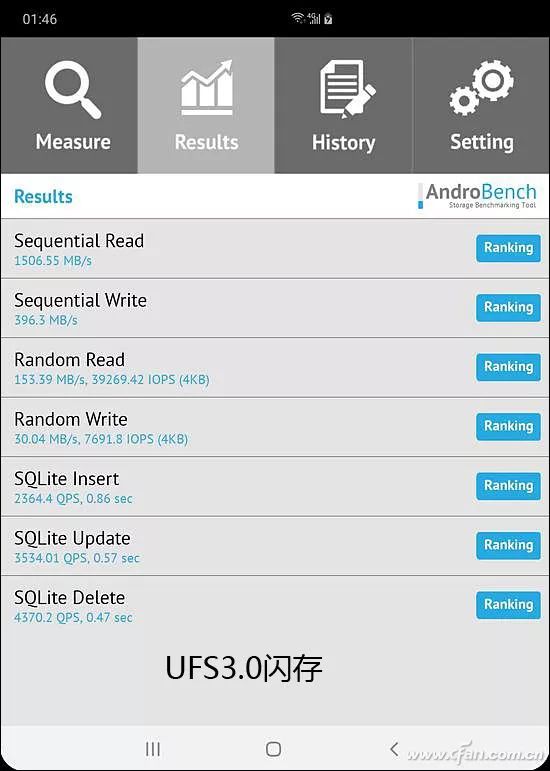
Performance of UFS3.0 Flash Memory
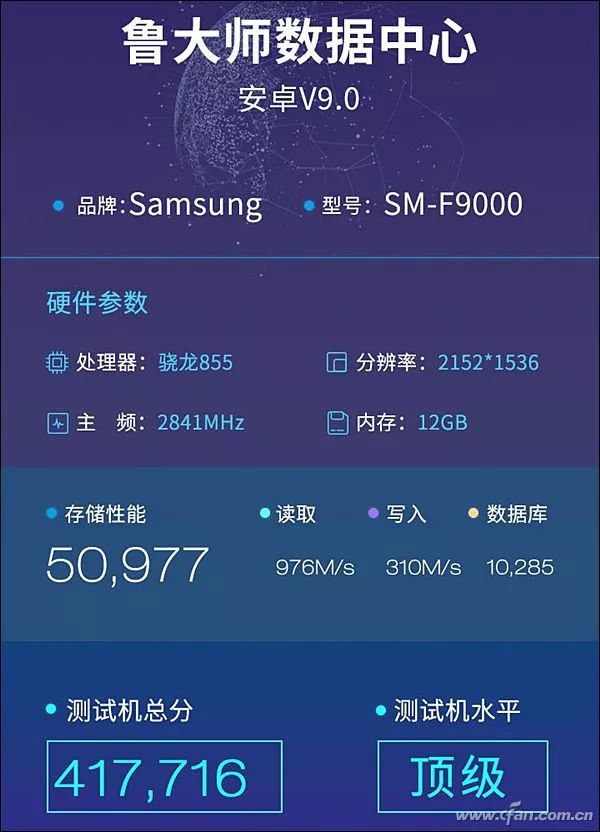
Performance of UFS3.0 Flash Memory
Careful readers may notice that the difference in sustained write speeds between eMMC5.1 and UFS2.1 seems not significant. Does this mean their actual performance during data writing is similar? The answer is naturally no; the random read/write (4K) performance is the metric most closely related to actual operations, and eMMC5.1 is significantly inferior to UFS.
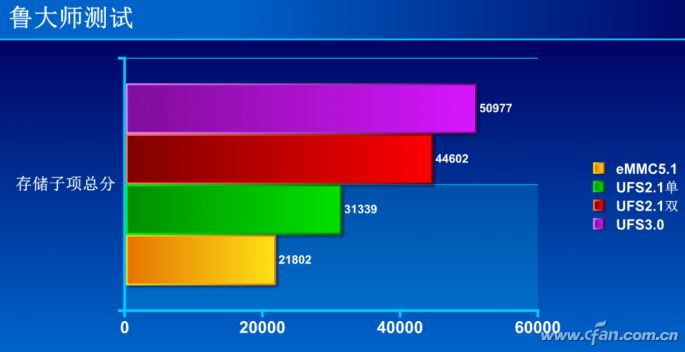
Lu Master
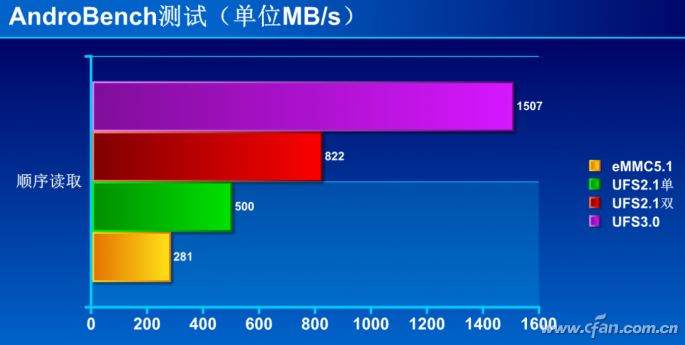
Sequential Read
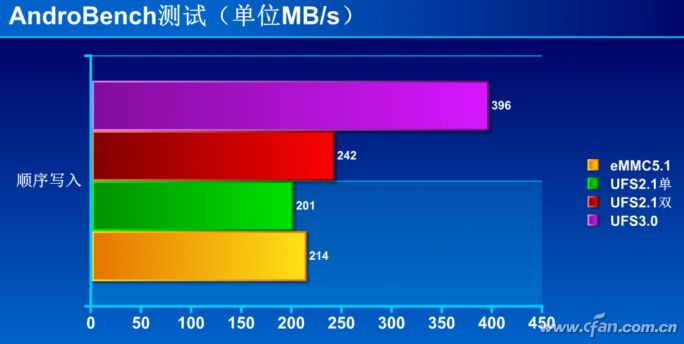
Sequential Write
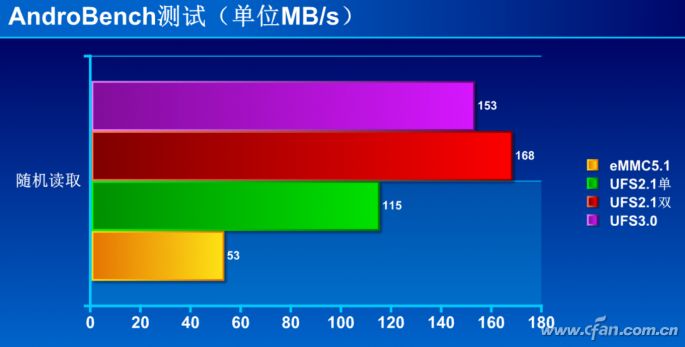
Random Read
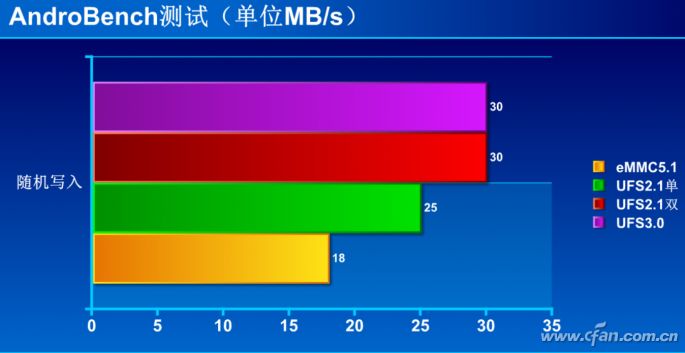
Random Write
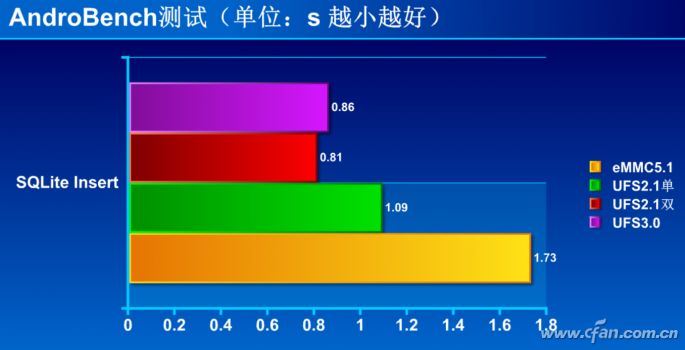
SQLite Insert
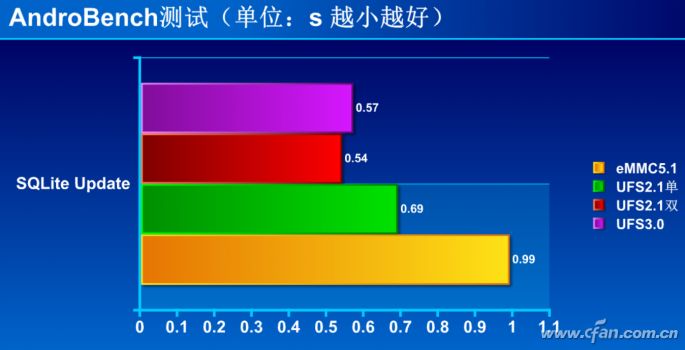
SQLite Update
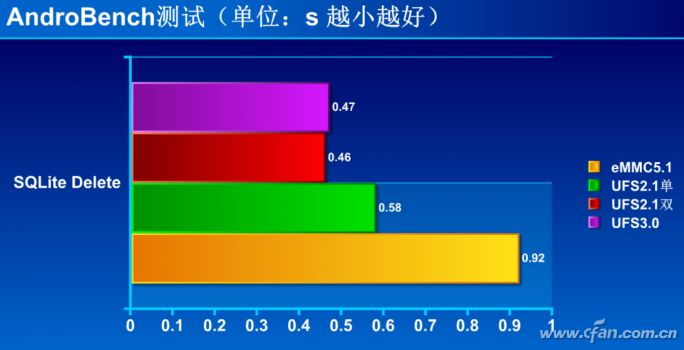
SQLite Delete
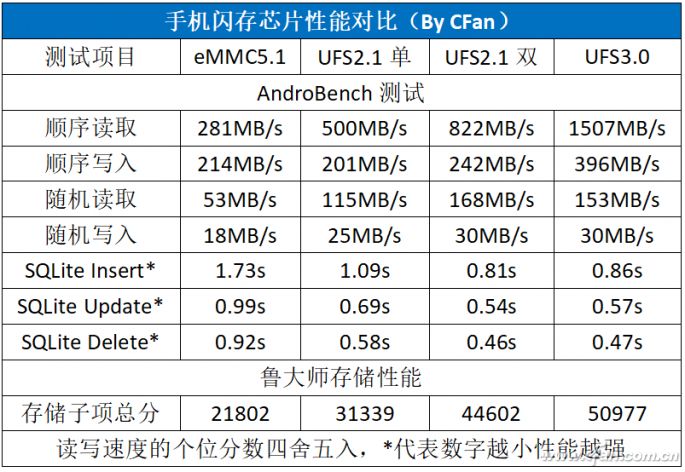
Summary Table
In summary, the overall performance of UFS3.0, especially its sustained read and write speeds, outperforms its predecessor UFS2.1 by a significant margin; however, in terms of random read/write and SQLite performance, it remains on par with dual-channel UFS2.1, which is a small regret.
Finally, let’s educate ourselves on the basics of eMMC and UFS flash memory:
eMMC:
Embedded Multi Media Card, which is based on NAND flash memory chips, additionally integrates a main controller, packaging them into a BGA chip to reduce space occupation on the PCB mainboard. It is the most widely used storage unit in mobile devices. The performance of eMMC improves with the upgrade of the bus interface, and the latest standard is eMMC 5.1.
UFS:
Universal Flash Storage, which can be seen as an advanced version of eMMC, is an array storage module composed of multiple flash memory chips, a controller, and cache. UFS overcomes the limitation of eMMC’s half-duplex operation (read and write must be executed separately) and can achieve full-duplex operation, thus doubling its performance.
UFS2.x:
UFS was previously subdivided into UFS 2.0 and UFS 2.1, both of which have mandatory standards for read and write speeds of HS-G2 (High Speed GEAR2), with optional HS-G3 standards. Both sets of standards can operate in 1Lane (single-channel) or 2Lane (dual-channel) modes. The read and write speeds a phone can achieve depend on the UFS flash memory standard and the number of channels, as well as the processor’s support for the UFS flash memory bus interface.
UFS3.0:
UFS 3.0 introduces the HS-G4 specification, with single-channel bandwidth increased to 11.6Gbps, which is double the performance of HS-G3 (UFS 2.1). Since UFS supports dual-channel bidirectional read and write, the interface bandwidth of UFS 3.0 can reach a maximum of 23.2Gbps, equivalent to 2.9GB/s. Additionally, UFS 3.0 supports more partitions (8 in UFS 2.1), has improved error correction capabilities, and supports the latest NAND Flash memory media.

Click “Read Original” to see more exciting content